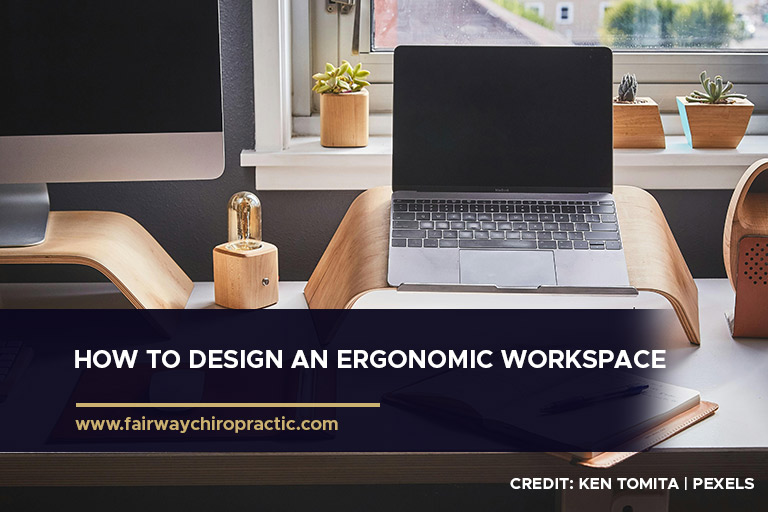
Are your workplace conditions conducive to your productivity and success, or are they hindering your progress? To work effectively, your workspace must be comfortable. Unfortunately, in today’s digital age, most jobs require sitting uncomfortably in front of a computer for extended periods of time. This sedentary lifestyle can lead to a range of health issues, such as back pain, neck strain, and eye fatigue. Fortunately, creating an ergonomic workspace can significantly reduce the risk of these problems and improve overall well-being.
What Is Ergonomics?
Ergonomics refers to the scientific field and academic discipline that focuses on creating spaces and products that are tailored to accommodate and suit the physical and cognitive capabilities and limitations of human beings. An ergonomic workspace is a well-designed environment that considers the user’s physical needs and promotes productivity and comfort.
So, how do you design an ergonomic workplace? Here are some essential elements and tips for designing an ergonomic workspace.
- Use gentle lighting
Establishing an effective ergonomic workstation includes more than just maintaining proper posture; it also involves considering lighting as a key factor. Whether your office has cheap light bulbs or energy-saving fixtures, it’s important that they’re installed ergonomically. Adequate lighting should fully illuminate each room without causing any glare on your monitor or making you squint. You might consider using daylight bulbs or incorporating natural sunlight into your lighting plan to create a more natural environment inside your workspace.
- Use adjustable work equipment
Even if the office furniture and computer equipment are standardized, you have unique physical requirements as an employee. Ideally, offices should have ergonomic office equipment, which includes adjustable furniture, monitor stands, and desks to allow you to customize your workstation. Maintaining proper posture is crucial to preventing various bone and muscle-related health problems, especially for individuals who spend prolonged hours sitting. It was reported that lower back pain, frequently associated with inadequate posture, is the most prevalent occupational personal disability worldwide.
- Stay active even during the workday
It’s common for modern employees to sit for extended periods, but this routine can have severe repercussions. A sedentary work lifestyle can deplete energy and cause multiple chronic health conditions. To prevent this, your workspace should create opportunities for physical activity and movement, allowing you to engage in some form of exercise every 1 or 2 hours. Access to a larger communal or outdoor area can enable you to stretch your legs without having to leave the premises.
- Promote good posture
Developing the habit of maintaining good posture while sitting or standing requires conscious effort. A lot of individuals are not entirely aware of their own habits, which may lead to poor posture or slouching. Displaying posters or other visual aids that promote proper posture can motivate you to be more mindful of your habits and provide you with an easy reference on how to adopt healthier ones. In some workplaces, meetings or regular training sessions may be held to educate employees on how to use the available ergonomic features in the workplace.
- Consider using an ergonomic keyboard

Ensuring the correct placement and positioning of your mouse and keyboard is of utmost importance. In some instances, replacing your current devices with more ergonomically designed ones may be necessary to prevent repetitive strain injuries such as tendinitis and carpal tunnel syndrome, which are common among office workers due to poorly designed peripherals or improper positioning.
If you experience discomfort in your fingers and wrists after a long day of typing, consider investing in an ergonomic keyboard. These keyboards are specifically designed to allow your hands and wrists to assume their most natural positions when working on the keyboard.
- Use a footrest
If you are on the shorter side, using footrests to keep your feet and legs comfortable while working, even with adjustable chairs, is recommended. Using a footrest can help keep your feet stable without suspending. Additionally, footrests can help enhance the mobility of your chair, making it a popular choice for many people. As for people of average height, footrests can be a helpful tool for maintaining good posture when using chairs that may be awkward or have wheels that easily slide on the floor.
- Consider using rugs
Certain office chairs are designed for improved mobility on solid surfaces like wooden or tiled floors, especially the lighter models. Unfortunately, they may be uncomfortable if the wheels move too easily on a smooth surface. This sliding can be problematic and lead to irritation and difficulty staying in one place. To prevent excessive sliding, one option is to get an office chair with rubber wheels. Another option is to place a rug under the chair, which can reduce friction and prevent your chair from sliding.
- Get rid of any clutter
A working area can cause chaos if it is cluttered with too many objects, making it harder to concentrate on a task and increasing the likelihood of essential items being misplaced. These issues alone are sufficient reasons to avoid clutter, but so is the strain it causes. Ergonomic workspace design emphasizes space optimization as a crucial element. This means making the best possible use of the available space. A well-organized and clutter-free environment reduces distractions to some extent and increases your efficiency.
- Seek advice from a professional
Your physical and emotional well-being significantly impacts your ability to work, communicate effectively, and collaborate with others. Even with limited guidance from a consultant, businesses can gain valuable insights into the issues and interactions that affect workplace ergonomics. Following the ergonomic workstation setup checklist from the experts leads to a healthier and more productive work environment.
When designing your workspace, it is vital to take into account both your physical and emotional well-being. Consider following this guide or hiring experts to create a healthier, more productive environment and avoid work-related injuries. Chiropractic care can be helpful for most people suffering from work-related injuries. Fairway Chiropractic Centre is the top-rated chiropractor in Kitchener / Waterloo, offering the best chiropractic care for your injuries. Call now at (519) 748-5535!









